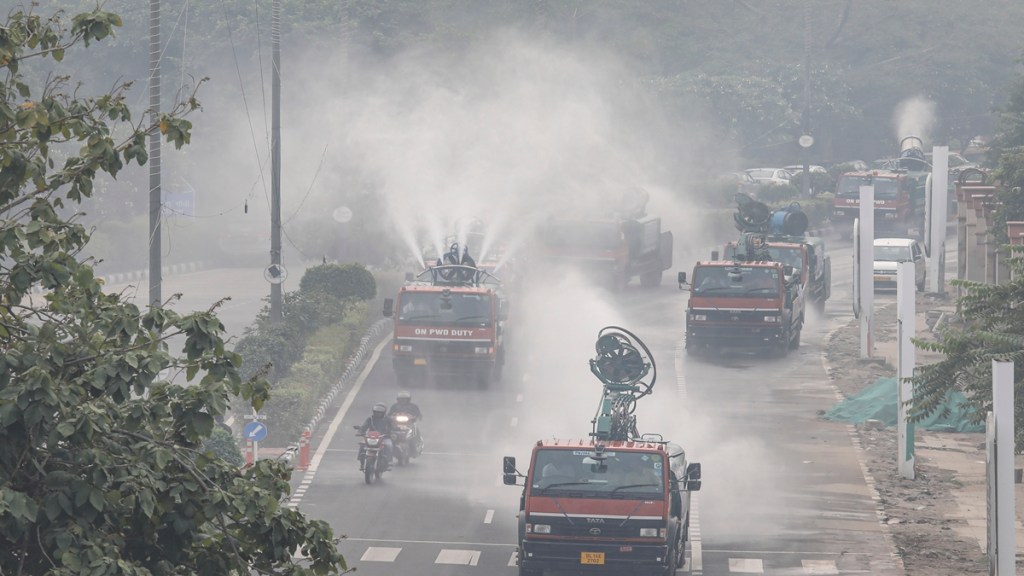Delhi Pollution: Amid unfavourable meteorological conditions post Diwali, the poisonous haze blanketing Delhi thickened on Wednesday with the air quality standing close to the “severe” category. At 8 AM, Delhi’s Air Quality Index (AQI) stood at 392.
The 24-hour average AQI, recorded at 4 pm every day, was 397 on Tuesday. It was 358 on Monday and 218 on Sunday.
Air pollution levels entered the severe category (AQI above 400) at many places within the city, including ITO (427), RK Puram (422), Punjabi Bagh (432), IGI Airport (404), Dwarka (416), Patparganj (417), Sonia Vihar (413), Rohini (421), Nehru Nagar (434) and Anand Vihar (430).
Neighbouring Ghaziabad (362), Gurugram (322), Greater Noida (312), Noida (364) and Faridabad (369) also recorded very poor air quality.
An AQI between zero and 50 is considered ‘good’, 51 and 100 ‘satisfactory’, 101 and 200 ‘moderate’, 201 and 300 ‘poor’, 301 and 400 ‘very poor’, 401 and 450 ‘severe’ and above 450 ‘severe plus’.
According to IQAir, a Swiss company that specialises in air quality monitoring, Delhi was the most polluted city in the world on Tuesday, followed by Dhaka, Lahore and Mumbai. According to a system developed by the Pune-based Indian Institute of Tropical Meteorology to identify the contribution of different pollution sources, stubble-burning accounted for 12 per cent of the air pollution in the capital on Tuesday. It is likely to be 14 per cent on Wednesday and six per cent on Thursday.
An official of the Commission for Air Quality Management (CAQM) told news agency PTI that stringent measures, including a ban on construction work and the entry of polluting trucks in Delhi, under the final stage of the central government’s air pollution control plan called the Graded Response Action Plan (GRAP) will continue until further orders.


